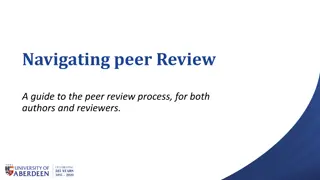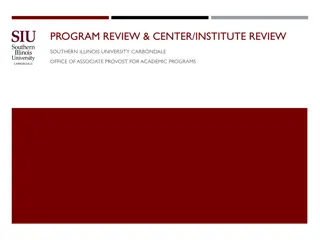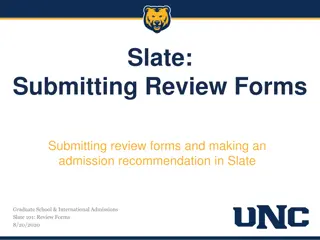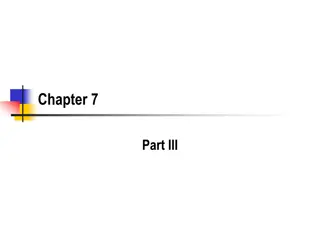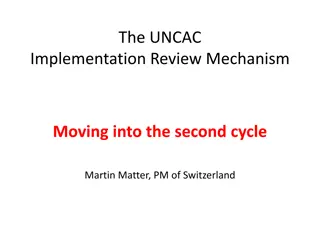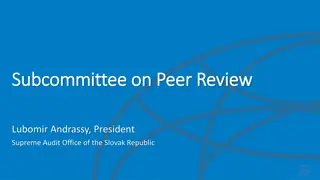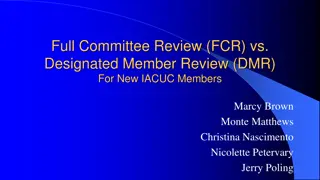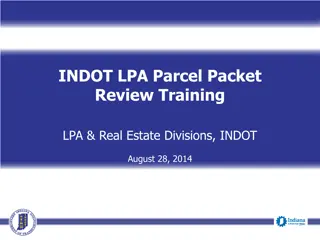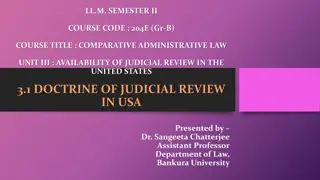
Understanding Solute Transport Mechanisms
Explore the concepts of advection, dispersion, mechanical dispersion, retardation, and contaminant evolution in solute transport through porous media. Learn how to quantify maximum concentration, plume position, and extent with relevant questions and moments analysis.
Download Presentation

Please find below an Image/Link to download the presentation.
The content on the website is provided AS IS for your information and personal use only. It may not be sold, licensed, or shared on other websites without obtaining consent from the author. If you encounter any issues during the download, it is possible that the publisher has removed the file from their server.
You are allowed to download the files provided on this website for personal or commercial use, subject to the condition that they are used lawfully. All files are the property of their respective owners.
The content on the website is provided AS IS for your information and personal use only. It may not be sold, licensed, or shared on other websites without obtaining consent from the author.
E N D
Presentation Transcript
Advection Advection causes translation of the solute field by moving the solute with the flow velocity 2 c 2 c c = D v R x t x In 1-d all is does is shift the plume in time by a distance v t. It does not change the shape at all Advection term v = -K dh dx ne ne effective porosity
Dispersion Dispersion causes spreading of the solute plume 2 c 2 c c = D v R x t x It is composed of both molecular and mechanical dispersion (that can not be distinguished on the Darcy scale) Dispersion term D= Dmol+Dmech
Mechanical Dispersion Since mechanical dispersion depends on the flow, it is expected to increase with increasing flow speed. The most common expression for mechanical dispersion is give by Dmech=av is the dynamic dispersivity v is the average linear velocity
Retardation When solutes flow through a porous medium they can interact with the solid phase. In particular they can sorb and desorb. The net result is a process called retardation that effective slows the transport of a solute through a porous medium 2 c 2 c c = D v R x t x R depends on the solute, water chemistry and geochemical make up of the porous medium Retardation term R From a mathematical perspective it can be thought of as a rescaling in time
Contaminant Evolution 2 c 2 c c = D v R C(t =0) = Md(x - x') x t x Mass of solute injected Solution 4pDt/Re )2 ( -x-x'-vt /R 4Dt /R M c =
Relevant Questions How would we quantify the maximum concentration and how it evolves in time? How do we quantify the position of plume? How would we quantify the extent of the plume?
Moments )2 ( -x-x'-vt M 4pDte c = 4Dt Zeroth Moment 1 (normalized total mass) First Moment vt (center of mass) Second Moment 2Dt+v2t2 (measure of weight of plume relative to a reference point) Second Centered Moment - 2Dt (a measure of the width of the plume that increases due to dispersion)
Imagine you have a continuous source at x=0 and you are only interested in x greater than zero (semi-infinite domain) v c x=-gc c(x =0) =C0 0 < x < Solution c =C0exp -gx v
Neglect advection Imagine you have a continuous source at x=0 and you are only interested in x greater than zero (semi-infinite domain) 0 = D 2c x2-gc c(x =0) =C0 0 < x < Solution (Inferred)
If we include both advection and dispersion Imagine you have a continuous source at x=0 and you are only interested in x greater than zero (semi-infinite domain) v c x= D 2c x2-gc The general solution to this ODE is
Health Risk for chronic exposure to carcinogens How does the EPA determine if a concentration is too high or that it poses a health risk to the general population CPF cancer potency factor IU/BW is the intake rate per unit body weight ED Exposure Duration; EF Exposure Frequency; AT Averaging Time
Health Risk How does the EPA determine if a concentration is too high or that it poses a health risk to the general population Risk, as defined here, is a probability of how many people in the population will develop cancer. The EPA mandates R<10-6 (less than one in a million gets sick) Although R>10-4 is when the trouble begins
Multiphase Flows Saturation (component dependent) Si=Vi/Vvoids Buckley Leverett (2 liquids) pc=constant Capillary Pressure => Multiphase Darcy Law Vadose Zone pnw=pair=0





